15 Organic Fall Vegetable Garden Ideas to Boost Your Harvest (Get Ready for #8!)
Fall is a magical time in the garden! As summer fades, it’s the perfect opportunity to rejuvenate your organic fall garden and gear up for a bountiful harvest.
From planting cool-season crops to embracing composting techniques, there’s a myriad of ways to enhance your garden this autumn. Each idea not only contributes to your harvest but also encourages sustainable practices and attracts beneficial wildlife. Whether you’re a seasoned gardener or just starting, these organic gardening tips will inspire you to cultivate a productive and vibrant fall garden. Let’s dig in and discover these 15 inspiring ideas!
Contents
- 1. Embrace Cool-Season Crops
- 2. Plant Garlic for a Flavorful Future
- 3. Use Cover Crops for Soil Health
- 4. Create a Composting Corner
- 5. Build Raised Garden Beds
- 6. Incorporate Companion Planting
- 7. Focus on Root Vegetables
- 8. Attract Pollinators with Fall Blooms
- 9. Utilize Vertical Gardening Techniques
- 10. Harvest and Store Seeds
- 11. Create a Wildlife Habitat
- 12. Practice Organic Pest Control
- 13. Plan for Winter Gardening
- 14. Start a Herb Garden for Fall Flavors
- 15. Enjoy the Harvest Season!
1. Embrace Cool-Season Crops
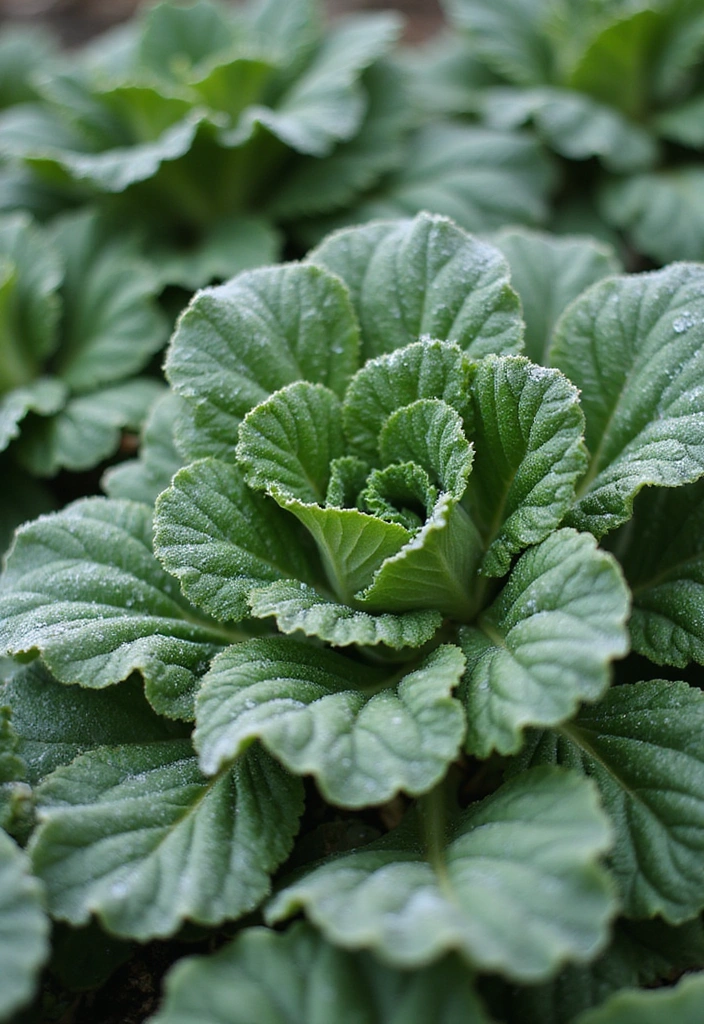
Cool-season crops like kale, spinach, and Brussels sprouts thrive in the crisp weather of fall. They grow best when planted in late summer or early fall, allowing them to mature as temperatures drop.
These vegetables are not only hardy but also sweeten with a touch of frost, providing a delicious addition to your winter meals. Consider direct sowing seeds in your organic fall garden for a fresh supply of greens.
Here are some tips for success:
– Prepare the soil with compost to give your crops a nutrient boost.
– Look for frost-resistant varieties to ensure a harvest even in colder months.
– Use row covers to protect young plants from early frost.
This combination fosters a thriving fall garden that will keep producing long into the winter.
2. Plant Garlic for a Flavorful Future
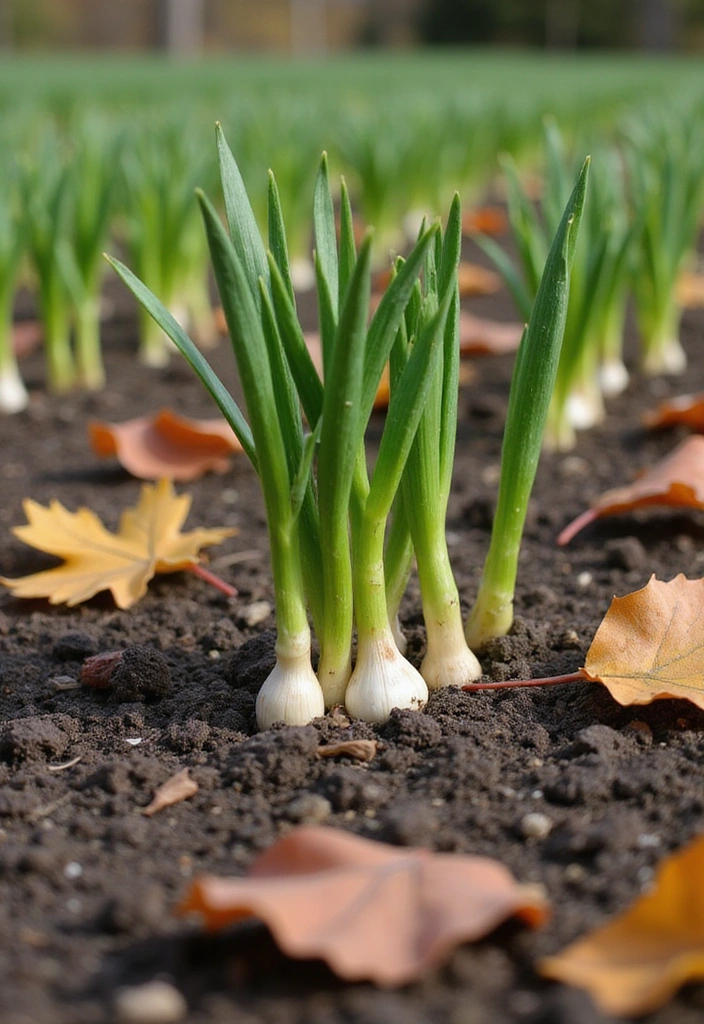
Garlic is a fantastic addition to any organic fall garden. Planting garlic in the fall allows the bulbs to establish roots before the ground freezes.
This means you’ll have delicious, homegrown garlic ready to harvest in mid to late summer of the following year. Plus, garlic is incredibly easy to grow and can be integrated with other plants to deter pests.
Here’s how to get started:
– Select healthy garlic bulbs from a local farmer’s market or nursery.
– Plant cloves about 2 inches deep and 4-6 inches apart in well-drained soil.
– Water lightly to keep the soil moist but not soggy.
With minimal care, your fall-planted garlic will reward you with a robust harvest, enhancing your culinary adventures.
3. Use Cover Crops for Soil Health
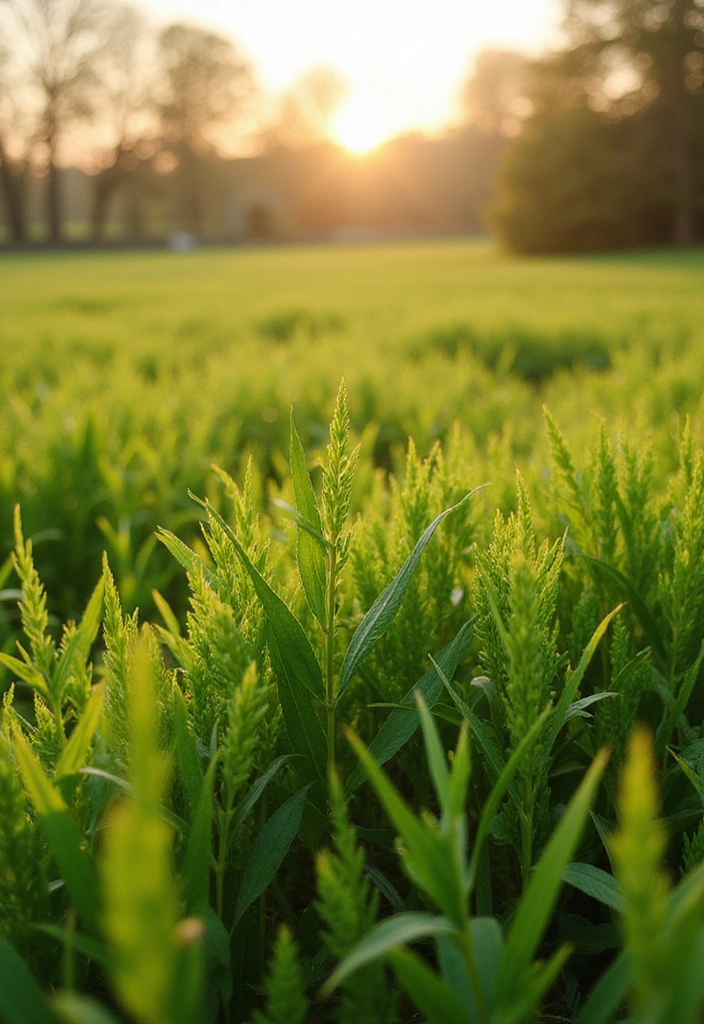
Cover crops are a brilliant way to enhance soil health during the fall months. Planting species like clover or rye helps prevent erosion and adds organic matter back into the soil when tilled under in spring.
Not only do these crops improve soil structure, but they also suppress weeds and attract beneficial insects. Here’s why you should consider using cover crops this fall:
– They enrich the soil with nitrogen and other nutrients.
– They can be planted after harvesting summer crops to utilize the remaining sunlight.
– They help create a healthier ecosystem in your garden.
By integrating cover crops into your organic gardening practice, you’ll set the stage for a thriving garden next season.
4. Create a Composting Corner
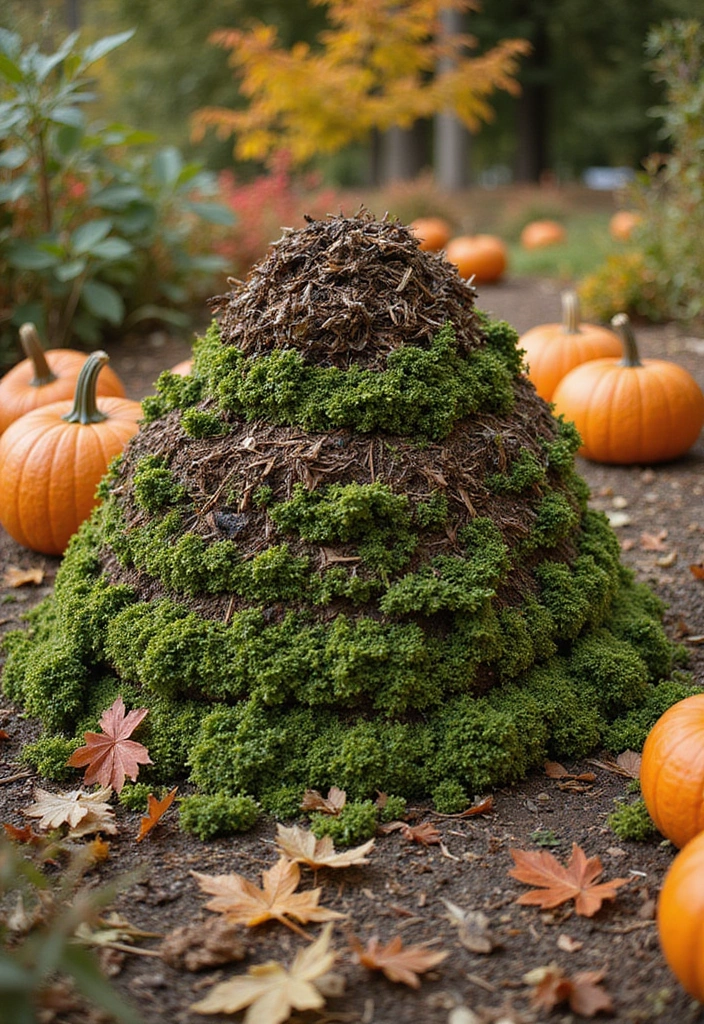
Fall is an excellent time to establish a composting system, turning kitchen scraps and yard waste into black gold for your garden. Composting not only reduces landfill waste but also enriches your soil with essential nutrients.
Here’s how to set up a successful composting corner:
– Choose a dry, shady spot in your yard with good drainage.
– Layer green materials (like vegetable scraps) with brown materials (like dried leaves).
– Make sure to turn the pile every few weeks to aerate it.
– Keep the compost moist, but not soggy.
Over time, you’ll create rich compost that will significantly boost the productivity of your organic fall garden.
5. Build Raised Garden Beds
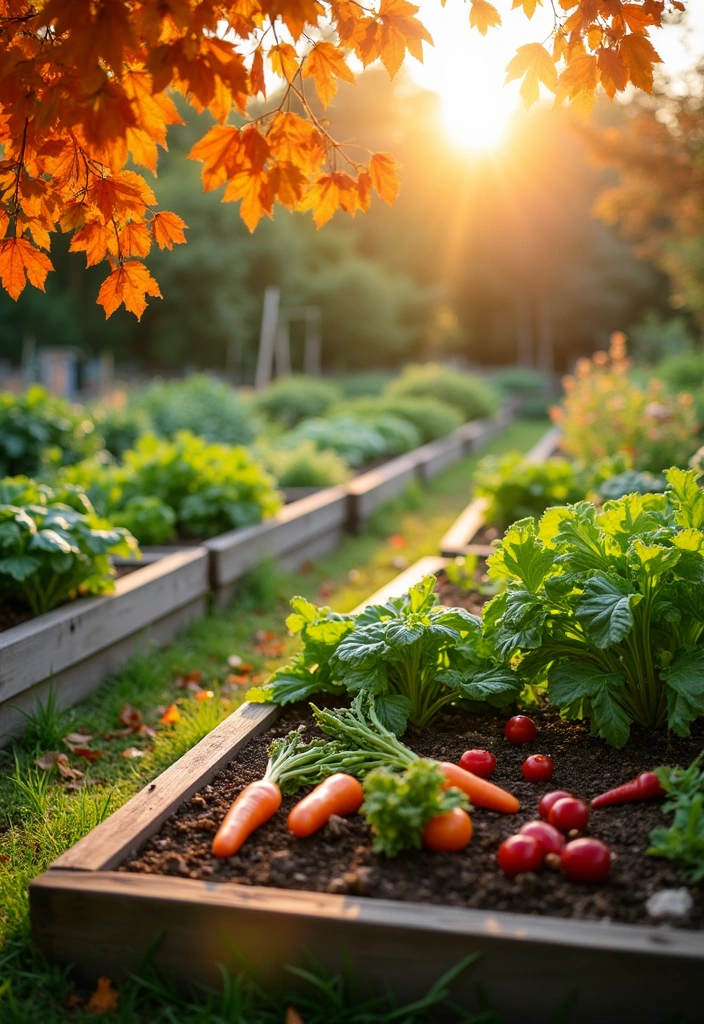
Building raised garden beds can be a game changer for your fall gardening. These beds not only make it easier to control soil quality but also provide better drainage and can extend your growing season.
In the fall, raised beds warm up faster in the sun, making them ideal for growing late-season crops. Consider these tips when creating your raised beds:
– Use untreated wood or bricks to avoid chemicals leaching into the soil.
– Fill with a mix of topsoil and compost for optimal nutrient availability.
– Position them for maximum sunlight exposure.
With a bit of effort, you’ll have a beautiful raised bed that enhances your organic fall garden and makes harvesting a breeze.
6. Incorporate Companion Planting
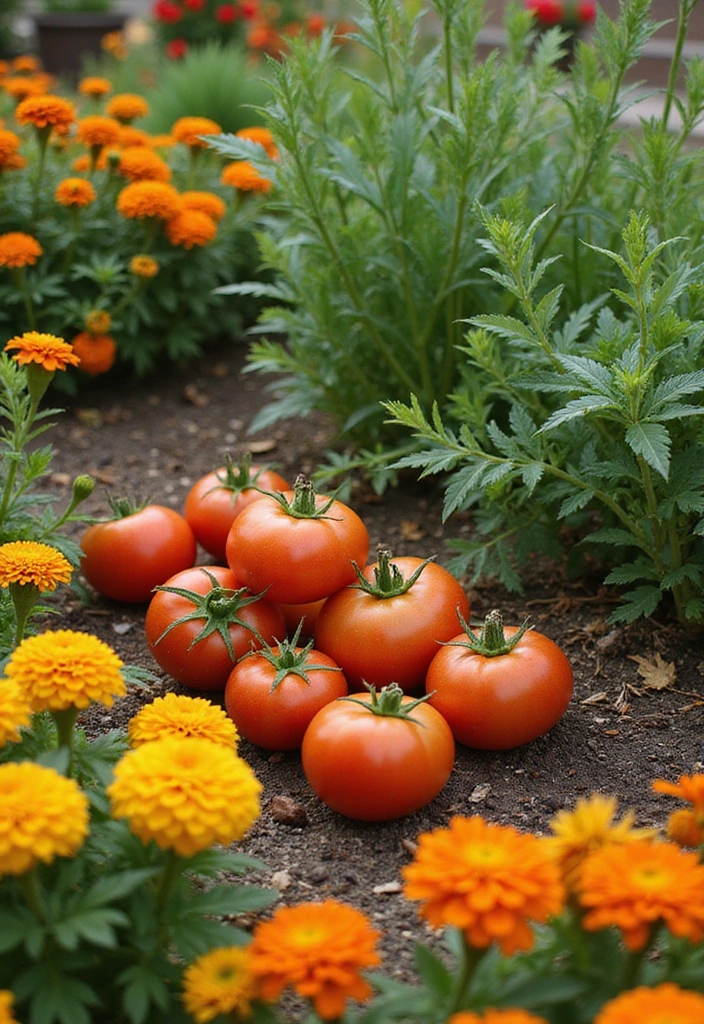
Companion planting involves growing different plants together for mutual benefits, and it’s a fantastic strategy for your organic fall garden. Pairing certain crops can enhance growth, deter pests, and even improve flavor.
For example, planting marigolds alongside tomatoes can help repel nematodes, while beans fix nitrogen in the soil for adjacent crops. Here are some beneficial pairings:
– Plant carrots with onions to help deter pests.
– Grow basil near tomatoes to enhance flavor.
– Pair cucumbers with beans for support and nutrient sharing.
Utilizing companion planting can lead to higher yields and healthier plants in your fall garden.
7. Focus on Root Vegetables
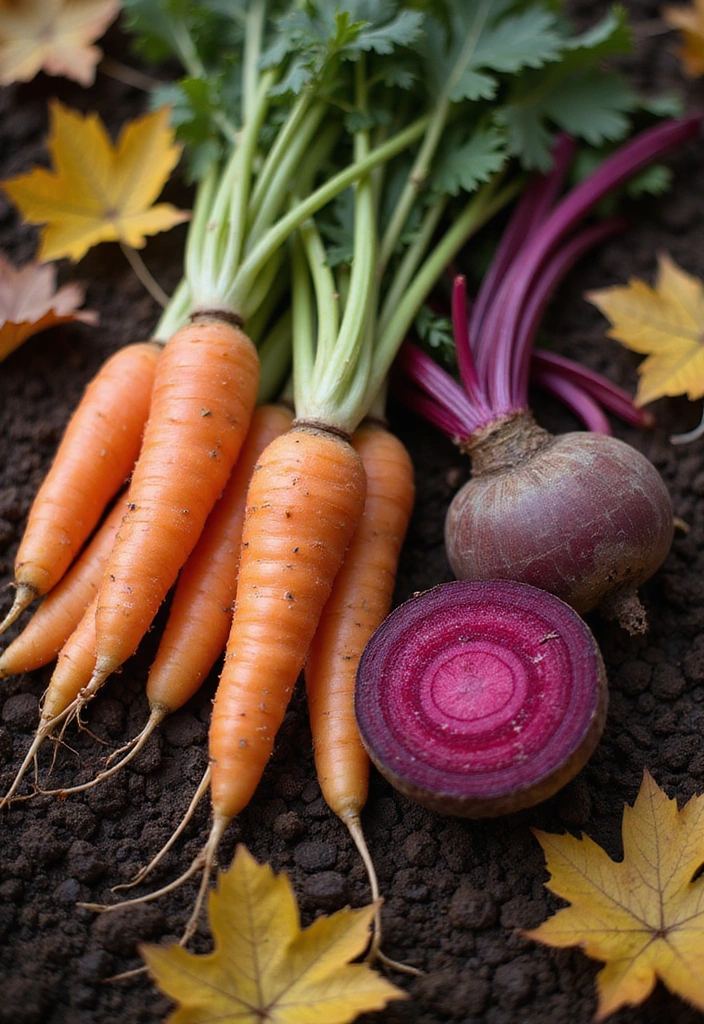
Root vegetables are a staple of any fall garden, and they thrive in cooler weather. Varieties such as carrots, beets, and turnips can be sown in late summer for a fall harvest, making them perfect for organic gardening.
These vegetables are not only delicious but also packed with nutrients. When planning your root vegetable garden, consider the following:
– Ensure loose, well-draining soil to allow easy root growth.
– Water consistently to aid in the development of sweet, flavorful roots.
– Harvest before the ground freezes for optimal taste and quality.
Root vegetables offer a satisfying crunch and earthy flavors that can elevate your fall meals.
8. Attract Pollinators with Fall Blooms
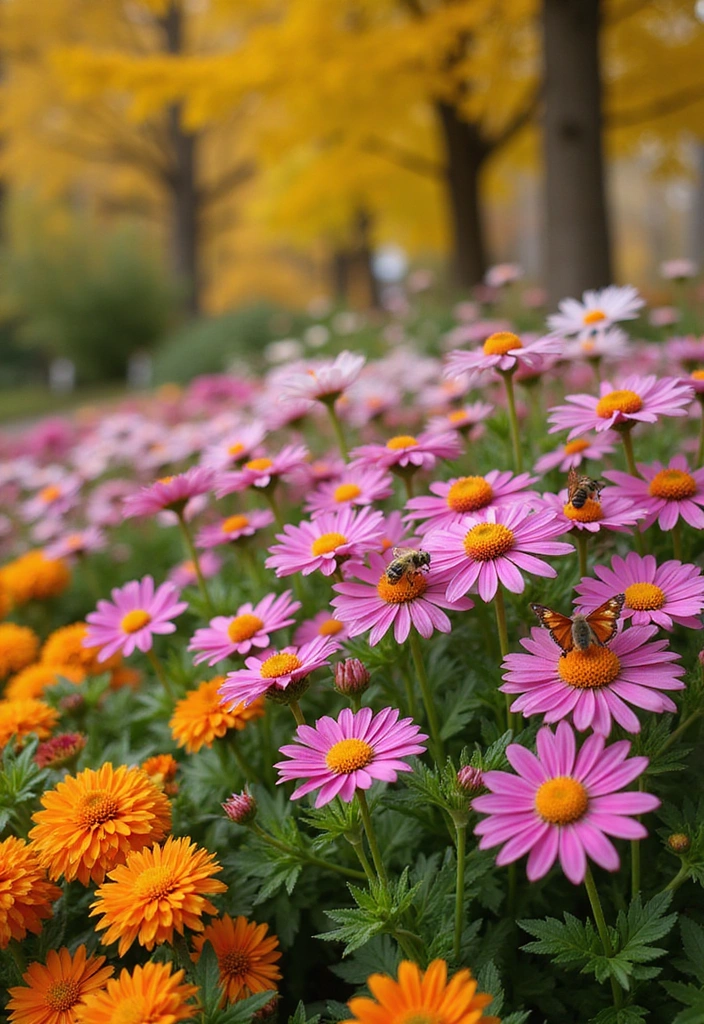
While many flowers fade in the autumn chill, some varieties still bloom and attract essential pollinators. Adding flowers to your organic fall garden can extend your gardening season and help local wildlife.
Consider planting asters, sedums, or chrysanthemums, which are known for their late bloom times and ability to draw in bees and butterflies. Here’s how you can create a pollinator-friendly environment:
– Choose a variety of native plants to support local pollinators.
– Plant in clusters to create a more inviting area.
– Avoid pesticides, which can harm beneficial insects.
A vibrant mix of fall blooms not only beautifies your garden but also promotes biodiversity and sustainability.
9. Utilize Vertical Gardening Techniques
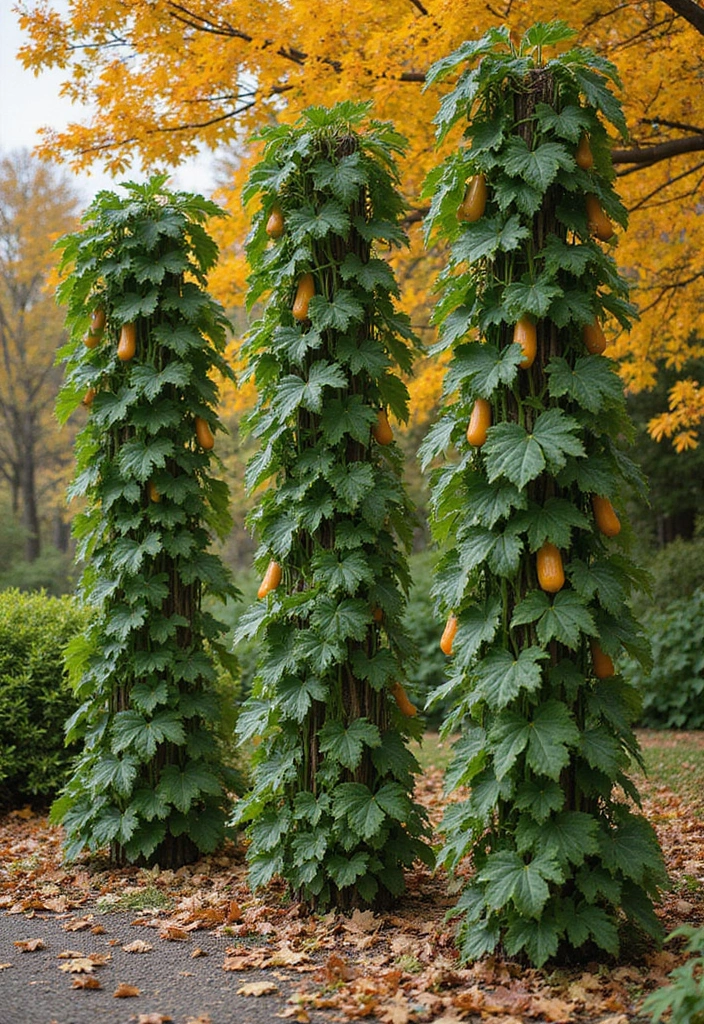
Vertical gardening is an innovative way to maximize space in your organic fall garden. By growing vegetables upward instead of outward, you can cultivate more in smaller areas.
This method is particularly beneficial for vining plants like peas, beans, and squash. Here’s how to get started with vertical gardening:
– Use trellises, cages, or fences to support your climbing plants.
– Ensure your vertical structures are sturdy enough to hold heavy fruit.
– Position plants to receive adequate sunlight.
With vertical gardening, you’ll have a lush garden that is easy to maintain and visually appealing, allowing your fall harvest to shine.
10. Harvest and Store Seeds
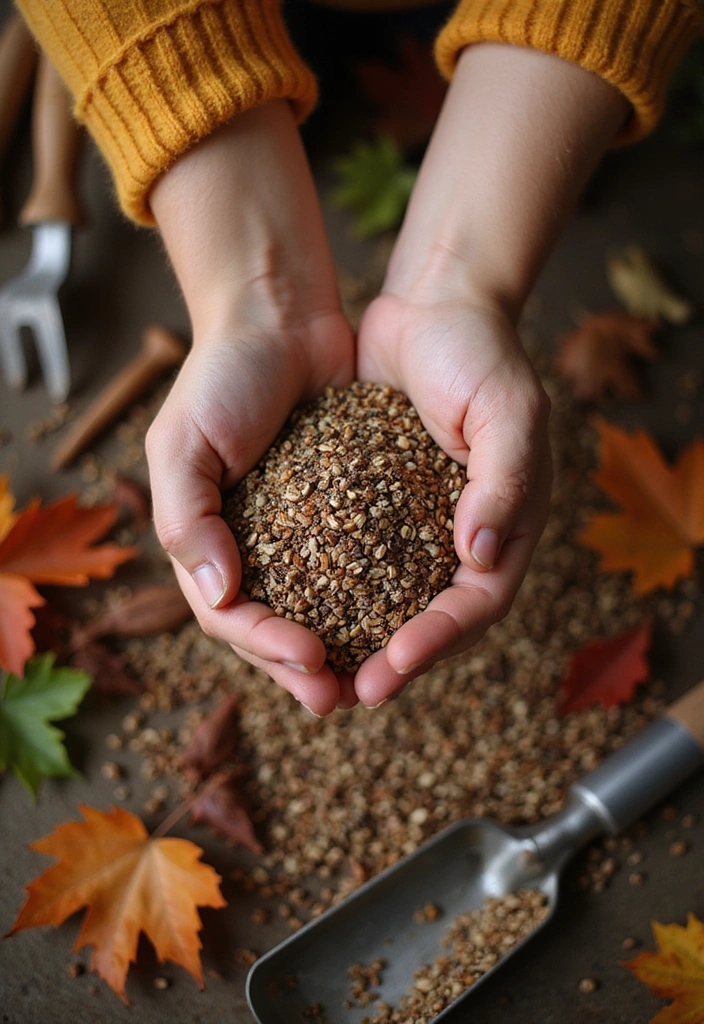
Fall is the ideal time to collect seeds from your healthiest plants for next year’s garden. Saving seeds not only saves money but also allows you to cultivate varieties that thrive in your local climate.
Here’s how to properly harvest and store seeds:
– Wait until the seed pods or heads are dry before collecting.
– Store seeds in a cool, dry place in paper envelopes or glass containers.
– Label each container with the plant name and date for easy reference.
By saving seeds, you’re contributing to sustainable gardening practices and ensuring your plants continue to flourish year after year.
11. Create a Wildlife Habitat
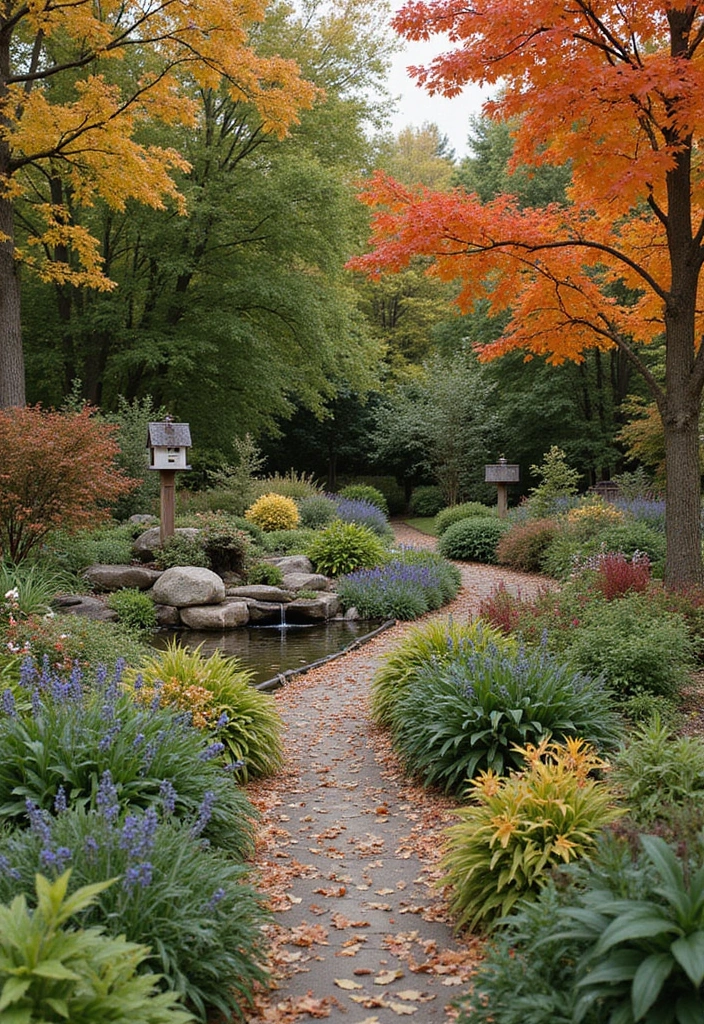
A diverse garden is appealing not just for human diners but for wildlife too! By creating a habitat, you can encourage beneficial insects, birds, and even small mammals to visit your garden.
Consider adding native plants, a water source, and shelter options like brush piles or birdhouses. Benefits of a wildlife-friendly garden include:
– Natural pest control from predatory insects.
– Improved pollination from visiting bees and butterflies.
– A dynamic environment that offers year-round interest.
Creating a wildlife haven in your organic fall garden not only benefits the ecosystem but also enhances your gardening experience.
12. Practice Organic Pest Control
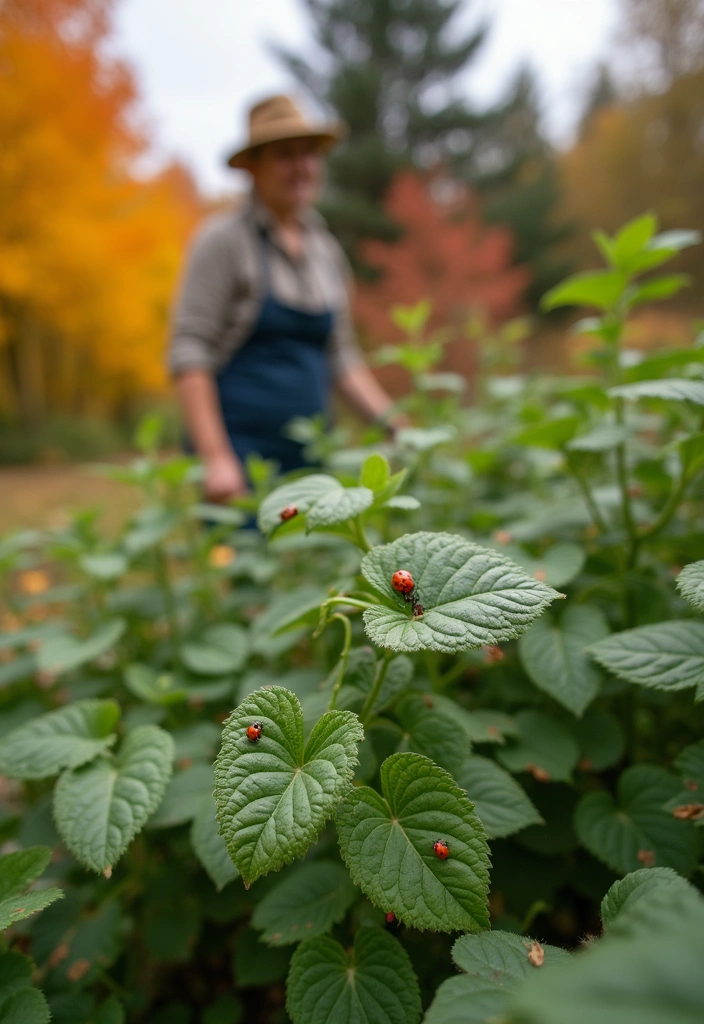
Even in the fall, pests can be a problem in your organic garden. However, there are various organic methods to keep unwanted insects at bay without resorting to chemicals.
Consider introducing beneficial insects like ladybugs, which naturally feed on harmful pests. You can also use neem oil or insecticidal soap for targeted treatments. Here are some tips for pest control:
– Regularly inspect plants for any signs of infestation.
– Use companion planting to deter pests naturally.
– Maintain garden hygiene by removing debris and weeds.
With a proactive approach to pest control, your organic fall garden can thrive without chemical interventions.
13. Plan for Winter Gardening
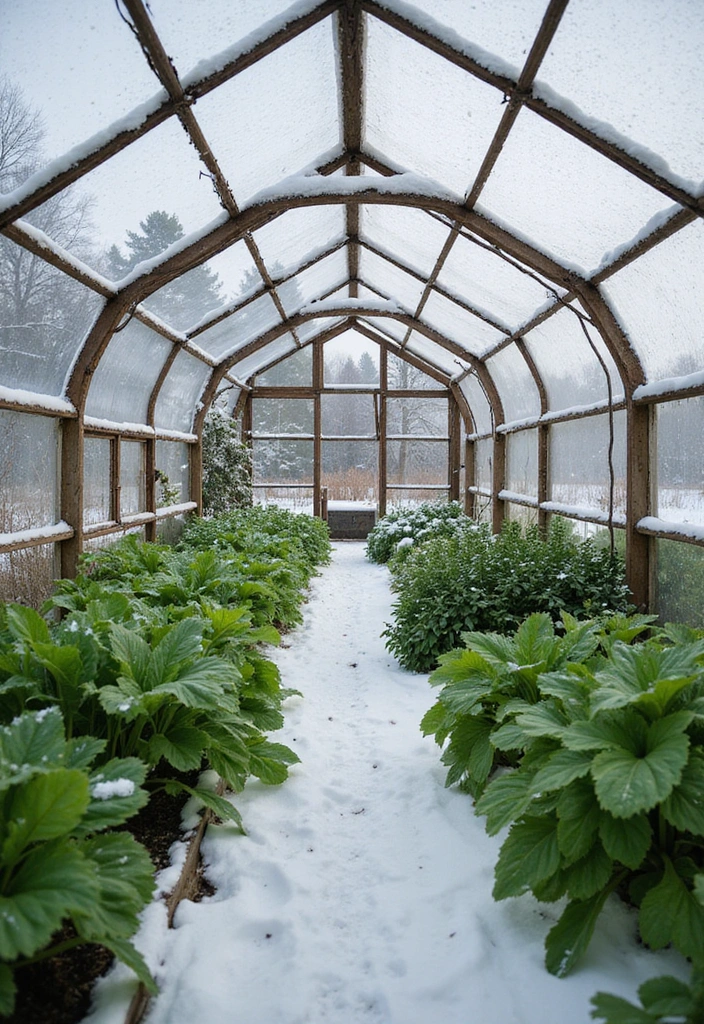
As fall settles in, it’s time to think about winter gardening strategies. Even in colder months, there are ways to keep your organic garden productive.
Consider using cold frames or greenhouses to extend the growing season for select crops. Some hardy greens can be grown all winter, providing fresh produce at a time when most gardens lie dormant. Here’s how to prepare:
– Choose winter-hardy varieties, like kale and arugula.
– Construct or invest in a cold frame to protect young plants from frost.
– Monitor moisture levels carefully during winter months.
With a bit of planning, your garden can remain a source of vibrant greens, even in the depths of winter.
14. Start a Herb Garden for Fall Flavors
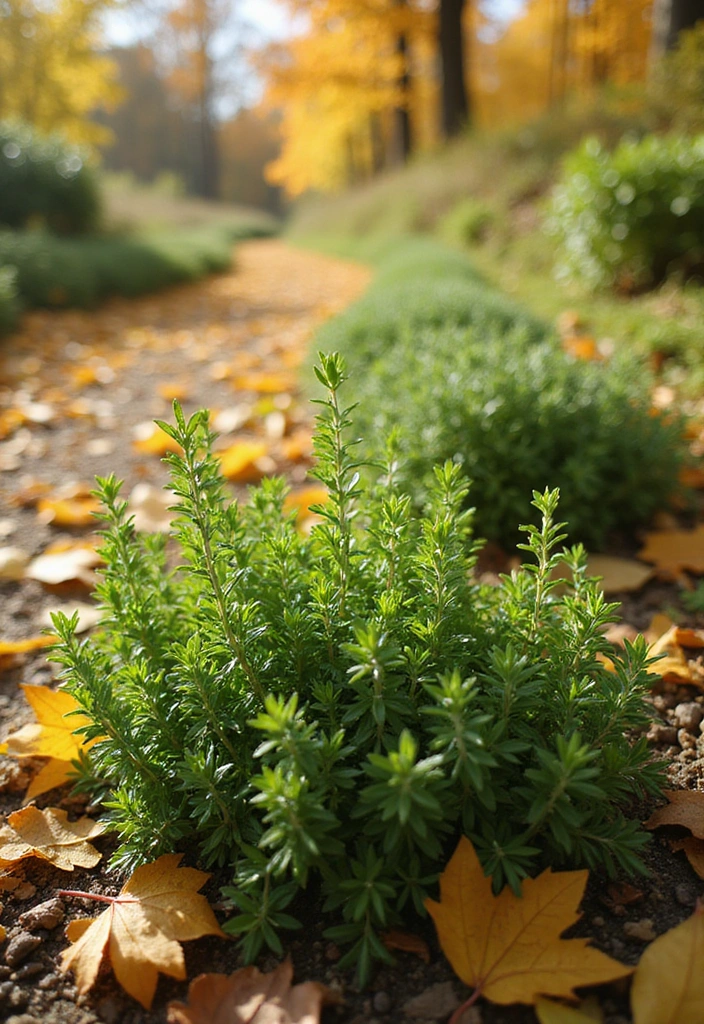
Herbs are a wonderful addition to your organic fall garden, providing fresh flavors for your meals while also being easy to grow. Varieties like parsley, thyme, and cilantro can thrive well into the cooler months.
These aromatic plants not only enhance culinary experiences but can also attract pollinators to your garden. To cultivate a successful herb garden, keep these tips in mind:
– Choose a sunny location to support healthy growth.
– Regularly trim plants to encourage bushy growth and prevent flowering too early.
– Harvest herbs in the morning for the best flavor.
With a small herb garden, you’ll bring fresh, vibrant flavors to your fall dishes and boost your organic gardening experience.
15. Enjoy the Harvest Season!
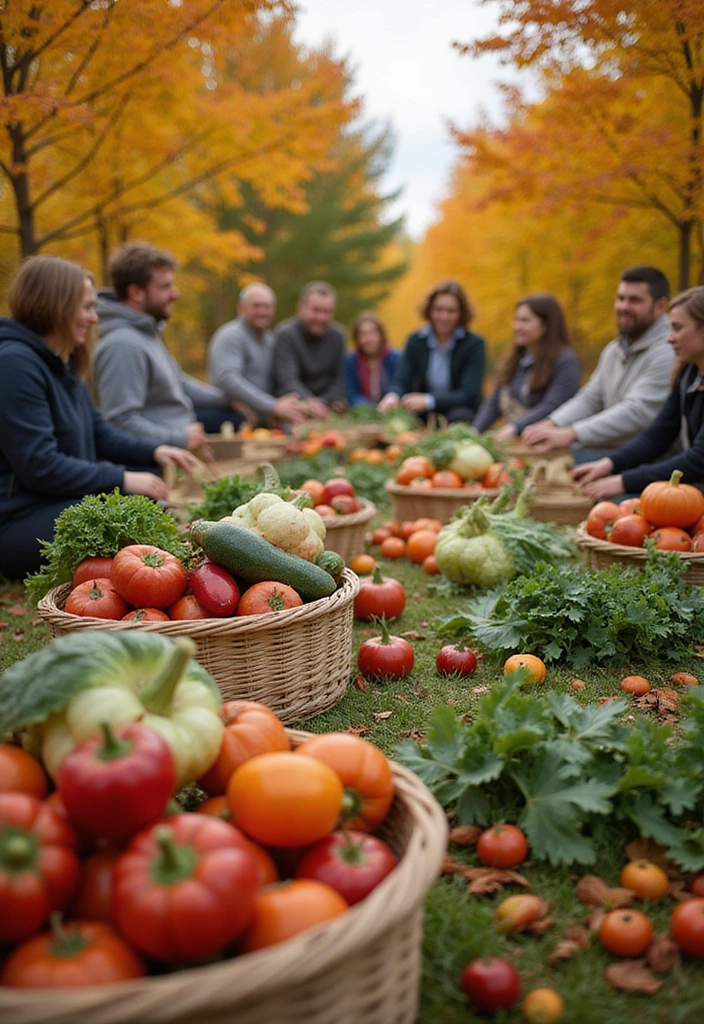
Finally, don’t forget to enjoy the fruits of your labor! Fall is the season of abundance, and taking the time to appreciate your garden’s bounty is essential. Whether you’re harvesting your crops or sharing with friends and family, make it a joyful experience.
Arrange end-of-season meals with your freshly picked vegetables, or host a garden gathering to celebrate your hard work. Consider these ideas:
– Create a seasonal recipe book using your homegrown produce.
– Share your harvest with neighbors or community gardens.
– Take photos to document your organic fall garden journey!
Embracing the harvest season not only fosters community but also deepens your connection with the earth.
Conclusion
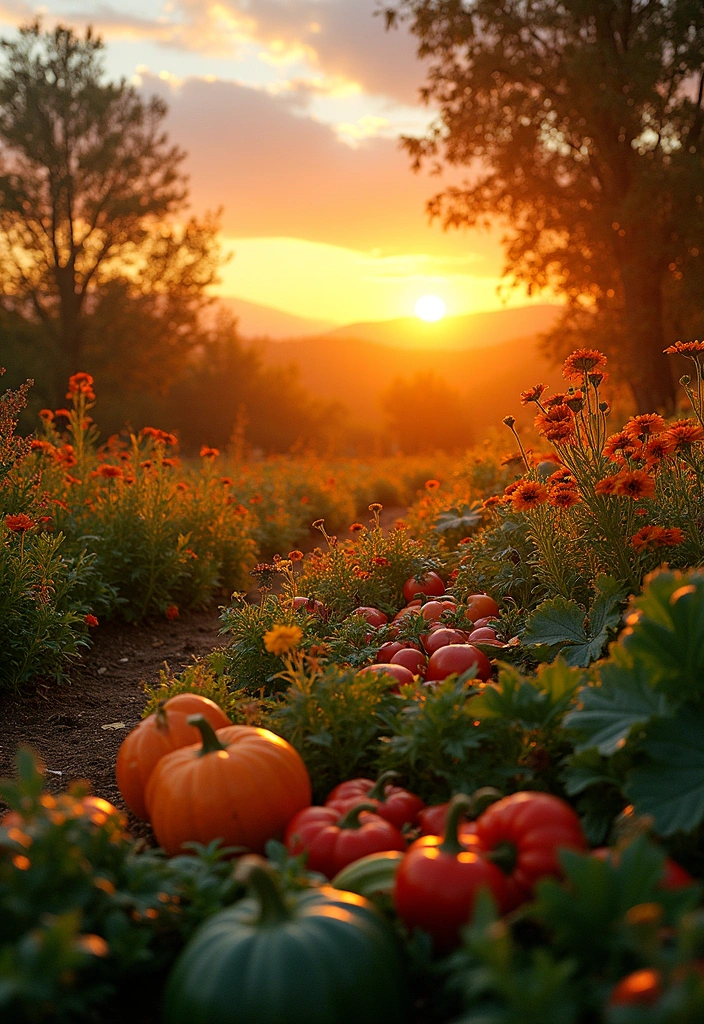
As you prepare your organic fall garden, these ideas can make a significant impact on your harvest and overall gardening experience. From planting cool-season crops to enjoying the harvest season, each step contributes to a vibrant, sustainable garden.
Remember, gardening is as much about the journey as it is about the destination. Embrace the beauty of fall and the joy it brings to your garden!

